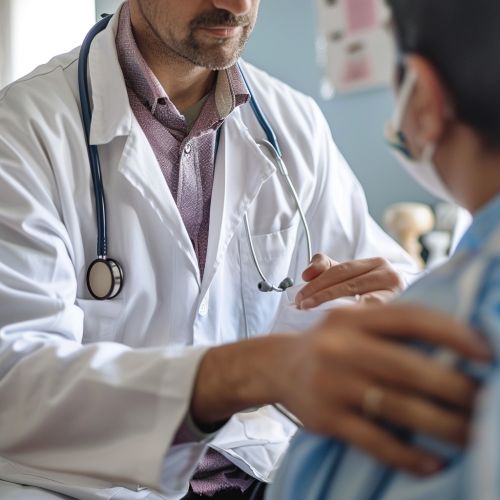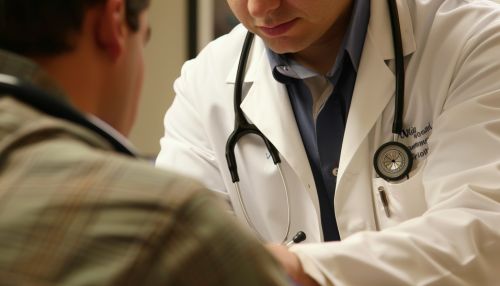Microorchidism
Definition
Microorchidism is a medical condition characterized by abnormally small testicles. This condition is typically diagnosed when the testicular volume is more than 2 standard deviations below the mean for the patient's age. Microorchidism can be an isolated condition, or it can be associated with other syndromes and disorders.
Causes
Microorchidism can be caused by a variety of factors, including genetic abnormalities, hormonal imbalances, and certain medical conditions.
Genetic Causes
Certain genetic disorders can cause microorchidism. For example, Klinefelter syndrome, a condition characterized by an extra X chromosome in males, often results in microorchidism. Other genetic conditions, such as Prader-Willi syndrome and Noonan syndrome, can also cause microorchidism.
Hormonal Imbalances
Hormonal imbalances can also lead to microorchidism. The testicles are responsible for producing testosterone, a hormone that plays a crucial role in male sexual development. If the body does not produce enough testosterone, or if the testicles are not responsive to the hormone, microorchidism can occur.
Other Medical Conditions
Certain medical conditions can also cause microorchidism. For example, cryptorchidism, a condition in which one or both of the testes fail to descend, can lead to microorchidism if not treated in a timely manner. Other conditions, such as testicular torsion or orchitis, can also result in microorchidism.


Diagnosis
The diagnosis of microorchidism typically involves a physical examination, medical history, and sometimes, additional diagnostic tests.
Physical Examination
During a physical examination, a healthcare provider will measure the size of the testicles using an orchidometer, a tool that allows for accurate measurement of testicular volume.
Medical History
A thorough medical history can also provide valuable information for diagnosing microorchidism. The healthcare provider may ask about symptoms, sexual development, and any family history of genetic disorders or hormonal imbalances.
Diagnostic Tests
In some cases, additional diagnostic tests may be necessary. These can include hormone tests, genetic tests, or imaging studies such as ultrasound.
Treatment
The treatment for microorchidism depends on the underlying cause. In some cases, treatment may not be necessary. In other cases, treatment options can include hormone therapy, surgery, or treatment of underlying conditions.
Hormone Therapy
If microorchidism is caused by a hormonal imbalance, hormone therapy may be recommended. This can involve the administration of testosterone or other hormones to stimulate testicular growth and development.
Surgery
In some cases, surgery may be necessary to treat the underlying cause of microorchidism. For example, if microorchidism is caused by cryptorchidism, surgery may be performed to move the undescended testicle into the scrotum.
Treatment of Underlying Conditions
If microorchidism is associated with a specific medical condition, treatment of that condition may help to improve testicular size. For example, if microorchidism is caused by a genetic disorder, treatment may involve a multidisciplinary approach to manage the various symptoms and complications of the disorder.
Prognosis
The prognosis for individuals with microorchidism varies depending on the underlying cause. In many cases, treatment can help to increase testicular size and improve sexual development. However, in some cases, microorchidism may be associated with infertility or other complications. Regular follow-up with a healthcare provider is important for monitoring and managing the condition.
